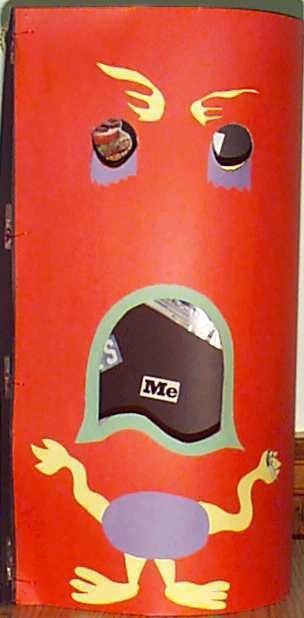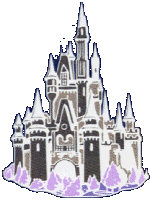On the Otherside


Monstrosity can be examined in the 21st century through many different mediums including news, music, film, economics and fashion. The world around us continues to define what is monstrous in similar ways yet their specific identification of what is monstrous varies. Looking specifically at the film industry’s depiction of monsters through a fairly wide selection of monster/horror films we are given an explicit message about the relationship between monsters and society. The movies “Frankenstein,” “Godzilla Returns,” “Forbidden Planet,” “Nightmare on Elms Street,” “Jaws,” and “Monsters Inc.” were the specific movies from which “On the Outside’s” structure and meaning was taken from. The idea of reversible monstrosity used in “On the Outside,” represents monstrosity as a portrayal given to the oddities as relative to the point of view. By defining monstrosity and its measurement, we can take our definition and apply it to either monsters or to society from the opposing side. From this study we will understand the meaning behind the structure of “On the Outside.”
Monsters are some of the oldest creatures of recorded history. Therefore their
defining characteristics must also be not only old, but also established throughout
the world. Repulsion, fear and confusion define the emotions most often affixed
to the monstrous whether it is from their physical appearance or that which
the monstrous insinuates, such as an omen or premonition. Sigmund Freud believes
that a large component of the monstrous is the idea of the uncanny, he writes,
“the uncanny is that class of the frightening which leads back to what
is known of old and long familiar” (Freud 195). Freud goes on to explain
that there is an undeniable fright which occurs when something that is known,
familiar and not out of the ordinary is slightly askew. When one object insinuates
that all other familiar objects may also be wrong, this causes the whole scene
to become uncomfortable.
Another aspect of monstrosity is defined by Mary Douglas as marginalization
and transitional states. Marginalization is a reaction to the terrifying.
The drive to expel all that is seemingly dangerous, impure or contagious is,
just as within the physical reaction of the self, occurs on the larger level
within groups and societies (Douglas 115). Douglas says, “[t]he idea
of society is a powerful image. It is potent in its own right to control or
to stir men to action. This image has form; it has external boundaries, margins,
internal structure. Its outlines contain power to reward conformity and repulse
attack” (Douglas 114). This quote certainly describes the ability and
reasoning of society, though it is more correct for our purpose here to let
society be unspecific to humans.
Another part of Douglas’s definition of monstrosity is
the threat of transitional states. The inability to label something prevents
trust or safety from being established with that object. The object is marginalized,
and as a consequence of entering the wild and high energy unknown world, it
cannot be accepted back into a society. Douglas explains, “[d]anger
lies in transitional states, simply because transition is neither one state
nor the next, it is undefinable. The person who must pass from one to another
is himself in danger and emanates danger to others” (Douglas 96). This
explains how those who have come near, or passed through a transitional state
cannot ever be the same, that is, if they are even able to re-enter society
due to the fear they cause.
Julie Kristeva believes that the monstrous is the abject. A transitional effect
that is not specific to the physical or mental. She explains that the abject
is “one of those violent, dark revolts of being, directed against a
threat that seems to emanate from an exorbitant outside or inside, ejected
beyond the scope of the possible, the tolerable, the thinkable” (Kristeva
1). She explains that the abject is something without definition which has
one truth to it, that is “It” is against us (Kristeva 1). She
goes on to explain what the abject comes from: “It is thus not lack
of cleanliness or health that causes abjection but what disturbs identity,
system, order. What does not respect borders, positions, rules. The in-between,
the ambiguous, the composite” (Kristeva 4). Here we see Kristeva include
the ideas of Douglas and Freud when she talks of transitional states, marginalization
and the uncanny (disruption of order).
It is important to realize that in any situation, anything can
be monstrous. When we study society versus monsters we are simply looking
for the group that exemplifies our “monstrous.” The monsters must
be familiar yet their identity and order must be upset. Their purpose or self
must be in a sort of transitional place, physically or mentally. They must
cause abjection in those who place themselves on the inside of margins. And
finally, monsters will be easy to recognize due to their forced exile. According
to the monster replica “On the Outside” there is two sides to
every issue. Because we are focusing on monsters we will review how “On
the Outside” displays the monstrous side as well as the ‘normal’
side of society, and of nature. Nature is truly the origin of many creatures
which we call monsters, so as we will be using monsters subjectively, we will
call these creatures the Naturals.
Human Society in the 21st century sees Naturals as monstrous. There is an
increasing amount of emphasis placed on the aesthetic beauty of man, and thus
there is a great deal of vanity, and narcissism. This may be over accentuated
due to the nature of the media that we are studying, which is purely visual
and audible. In the films “Jaws,” “Godzilla,” “Nightmare
on Elm Street,” and, “Frankenstein” the initial source of
fear of these Naturals is their size, their deviation from the human form,
their cannibalism and hatred for humans. The disorder that the Naturals cause
within human society is immediately detrimental to the boundaries that man
has built. Douglas explains Roheim’s supporting idea of man’s
pride in the present situation:
Primitive culture is autoplastic, ours is alloplastic. The primitive seeks
to achieve his desires by self-manipulation, performing surgical rites upon
his own body to produce fertility in nature, subordination in women or hunting
success. In modern culture we seek to achieve our desires by operation directly
on the external environment, which the impressive technical results that are
the most obvious distinction between the two types of cultures. (Douglas 116)
Hence, when man attempts to structure nature just as he has
structured the world, the Naturals will destroy his plans, no matter how hard
man tries to keep them out. This idea is expressed in “On the Outside”
as when the Natural is on the outside we see the materialistic and vain society
of man on the inside which is keeping the Natural out.
Society of the Naturals sees humans as monsters. Naturals have a society which
originated with the beginning of life millions of years ago. Thus their world
is “autoplastic,” according to Douglas, as nature simply changes
and evolves to suite the surrounding world. However mankind represents the
uncanny to the Naturals. Man was once simply a product of nature but exited
the realm of the “autoplastic,” and became “alloplastic,”
forcing themselves onto the world and basing themselves upon looks instead
of function- becoming unfamiliar and frightening to the Natural society. When
compared to the amount of Naturals in the galaxy, man is a very small population,
therefore we should see him as ostracized and pushed onto small plots of land
where they have created their own society. Mankind’s society is therefore
marginalized, and whenever they begin to spread quickly, they are punished
by the Naturals, who fear them. This idea is represented by the film “Monsters
Inc.,” where we see Naturals using man for energy, though keeping them
separate. “On the Outside” when folded such that the civilization
of man is on the outside shows that on the inside are Natural characteristics,
as man sees them.
Thus we see in the films that the original conflict between man and nature is due to their respective opinions of each others’ monstrosity. The double standard that exists makes since when we look into cultures where there was such thing as Yin and Yang, and gods who were good, but to be feared. Therefore this double standard is necessary for the development of the world.
Works Cited
Douglas, Mary. “Powers and Dangers” Purity and Danger: An Analysis of the concepts of Pollution and Taboo. New York: Routledge, 1966.
Forbidden Planet. Dir. F. McLeod. MGM, 1956.
Frankenstein. Dir. J. Whales. Universal Studios, 1931.
Freud, Sigmund. “The Uncanny” Writings on Art and
Literature. Stanford: Stanford University Press, 1997.
Kristeva, Julie. “Approaching Abjection” Powers of Horror: An
Essay on Abejection. New York: Columbia University Press, 1982.
Return of Godzilla. Dirs. I. Hashimoto, R.J. Kizer. 1956.
Jaws. Dir. S. Spielberg. Universal Studios, 1975.
Monsters, Inc.. Dirs. D. Silverman, P. Docter. Disney/Pixar, 2001.
Nightmare on Elm Street. Dir. W. Craven. New Line Cinema, 1984.
